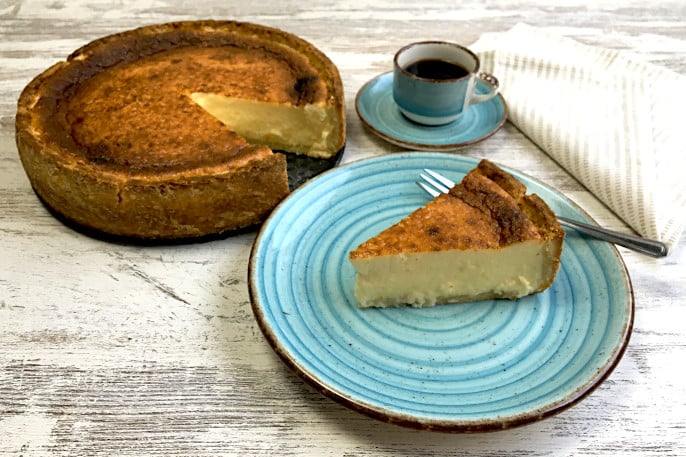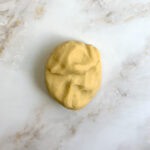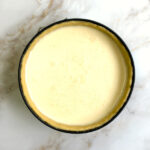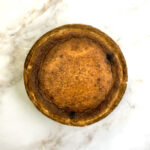
My version of the San Sebastián Cheesecake
Usually, I am not a big fan of cheesecake. I mostly find them too sweet and generally would choose a different dessert. But since I moved to Barcelona and tried some baked cheesecakes (tartas de queso) from Spain, I changed my opinion completely, and couldn’t resist writing down my own recipe. Maybe the most famous baked Cheesecake from Spain is the San Sebastián Cheesecake from the Basque Country.
In my baked cheesecake recipe, I use a sable pastry as a base because I like the nice contrast to the creamy filling, to which I added some Parmesan cheese which gives the cake a nice savory touch. I think citrus fruits always pair very well with desserts and freshen them up, so I also added some orange and lemon zest.
So, no, this is not a recipe for a traditional San Sebastián Cheesecake, it is a recipe for a baked cheesecake the way I like it. I hope you enjoy the outcome as much as I do.
Try my Recipe for Original Austrian Sachercake

Where does Cheesecake come from?
Like most of the European knowledge and food culture, cheesecake has its roots back to the ancient Greeks. The first recipes go back to the 5th century BCE and were made for religious occasions and feasts. Some of these cakes were fried in olive oil or simply kneaded together and served cold. The most common extra ingredients at this time were cheese, honey, sesame seeds, and grape must. The Romans took over the preparation from the Greeks.
It was not until the 16th century that eggs, curd, butter, and sugar were added to this cake in Europe, which is more alike to today’s cheesecake. In 1872 an American cheese maker trying to copy the neufchâtel, a cheese of French origin, ended up creating a new cream cheese that would eventually give rise to the famous Philadelphia cheese, the main ingredient of the refrigerated prepared cheesecake.

What is San Sebastián Cheesecake?
For sure, you have heard already about the famous baked cheesecake from Donostia San Sebastián from the Basque Country in the north of Spain near the border to France. The New York Times voted this baked cheesecake the flavor of the year 2021. One of the most famous is from the restaurant La Viña in San Sebastián, where they make this baked cheesecake since the 1990s.
The classic San Sebastián Cheesecake has no bottom or crust and is baked inside parchment paper at high temperature, so it stays caramelized nearly burned on top but still creamy inside.
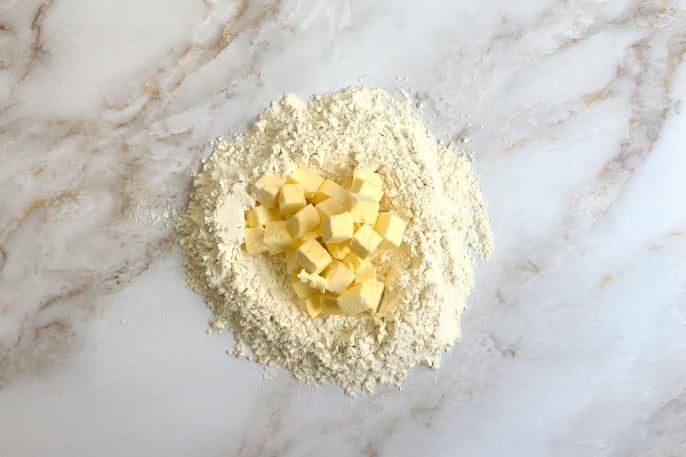



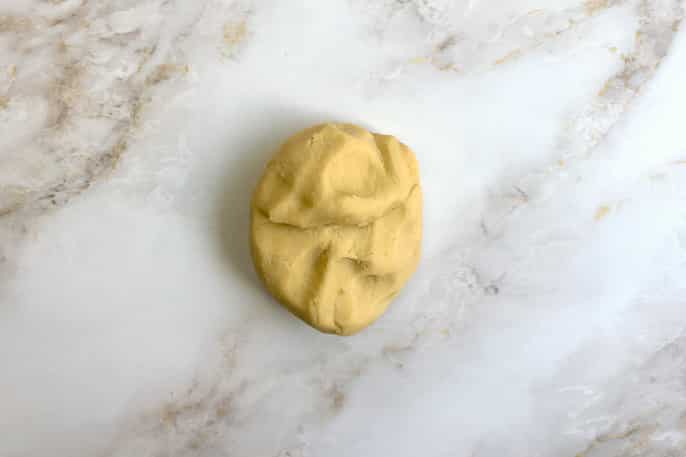
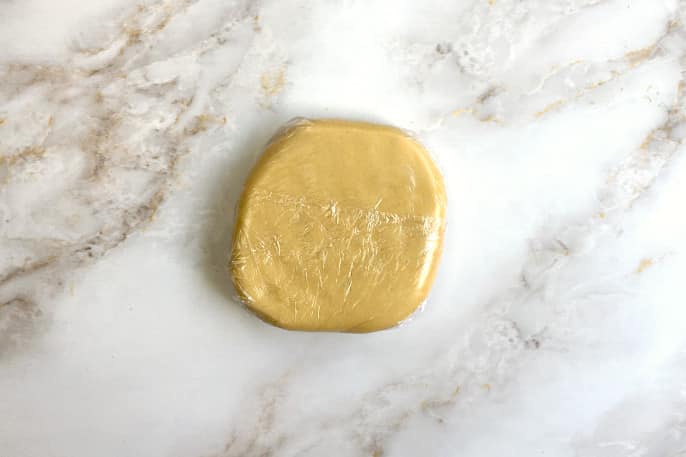


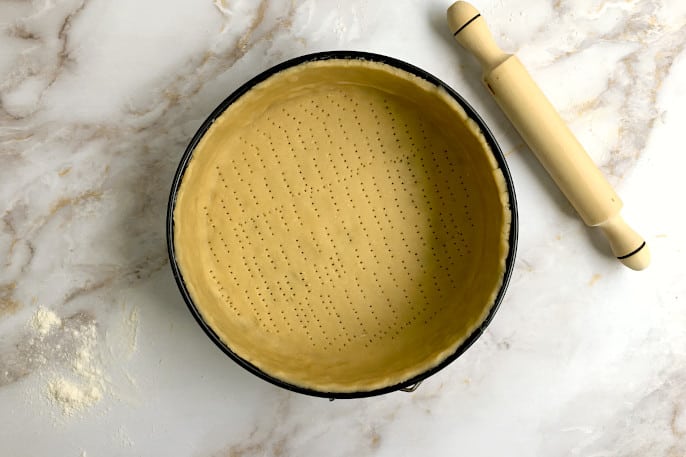
How to make Sable Pastry?
Sable pastry (pâte sablée in french) is a light and slightly sweet lining pastry and a traditional tart base. It is much easier than most other pastry doughs, very versatile and can be baked with a filling or plain (for a filling to be added later). You can use this recipe for sable pastry with all kind of fillings. The pastry should be made 2h-24h ahead and can be kept in the refrigerator for 3 days or up to 3 months in the freezer.
While kneading the dough, the butter coats the flour grains in fat, so they don’t stick together, which prevents the pastry from having a hard layer after baking. During cooking, the butter melts and joins all the grains together, creating the sandy texture.
It is important that the butter is well chilled before you add it to the flour. Before adding the egg, rub in the butter in the flour until the dough has a rough crumbly texture. Don’t knead the pastry too much, just until you can’t see any remaining visible pieces of butter. These are the secrets of success to this pastry.

Baked Cheesecake Recipe
Equipment
- round cakeform (springform)
- kitchen scale
- cheese grater
- handmixer or whisk
- Rolling Pin
Ingredients
For the crust (sable pastry)
- 250 g flour
- 150 g butter cold, cut into small cubes
- 50 g granulated sugar
- 1 egg
For the filling
- 6 eggs
- 200 g granulated sugar
- 600 g cream cheese
- 300 g cream
- 50 g parmesan cheese
- 1 orange
- 1 lemon
Instructions
Sable Pastry
- Make a mound of flour with a well in the middle and place the butter in the well.
- Rub the butter into the flour using your fingers until the mixture resembles breadcrumbs.
- Add the salt, sugar, and egg. Mix into a dough using your fingers.
- Knead lightly by flattening the dough using the heel of your hand. Check the smoothness and knead again if necessary; there must be no visible butter remaining, but don't work the pastry too much.
- Press flat, wrap in plastic film and refrigerate for at least 2 hours.
- Take out the dough from the fridge and let rest on the benchtop for 15 minutes to gain some temperature and be easier to handle. While waiting, grease the cakeform with butter.
- Slightly dust the benchtop with flour and roll out the pastry, using a rolling pin up to a size approximately 5cm more than the diameter of your cake form and to a thickness of more or less 5mm. Don't worry it does not have to be perfect.
- Place the dough inside your cakeform and mold it using your fingers. Cutaway protruding parts on the side until the edge is evenly shaped. Prick the bottom with a fork and place the cakeform in the fridge while preparing the filling.
- Preheat your oven to 210 °C.
The Filling
- In a bowl add the eggs and the sugar and mix with a hand mixer or a whisk until creamy.
- With the grater add the zest of one orange and one lemon and mix again. Take care to do not use the white part of the peel because this part is bitter.
- Add the cream cheese, the grated parmesan, and the cream. Mix again until everything is well incorporated, and you can't see any pieces of cream cheese anymore.
- Pour the mixture inside the cakeform with the raw pastry and bake at 210 °C for 40 minutes.
- Let the cheesecake cool down for 1 hour before cutting.

